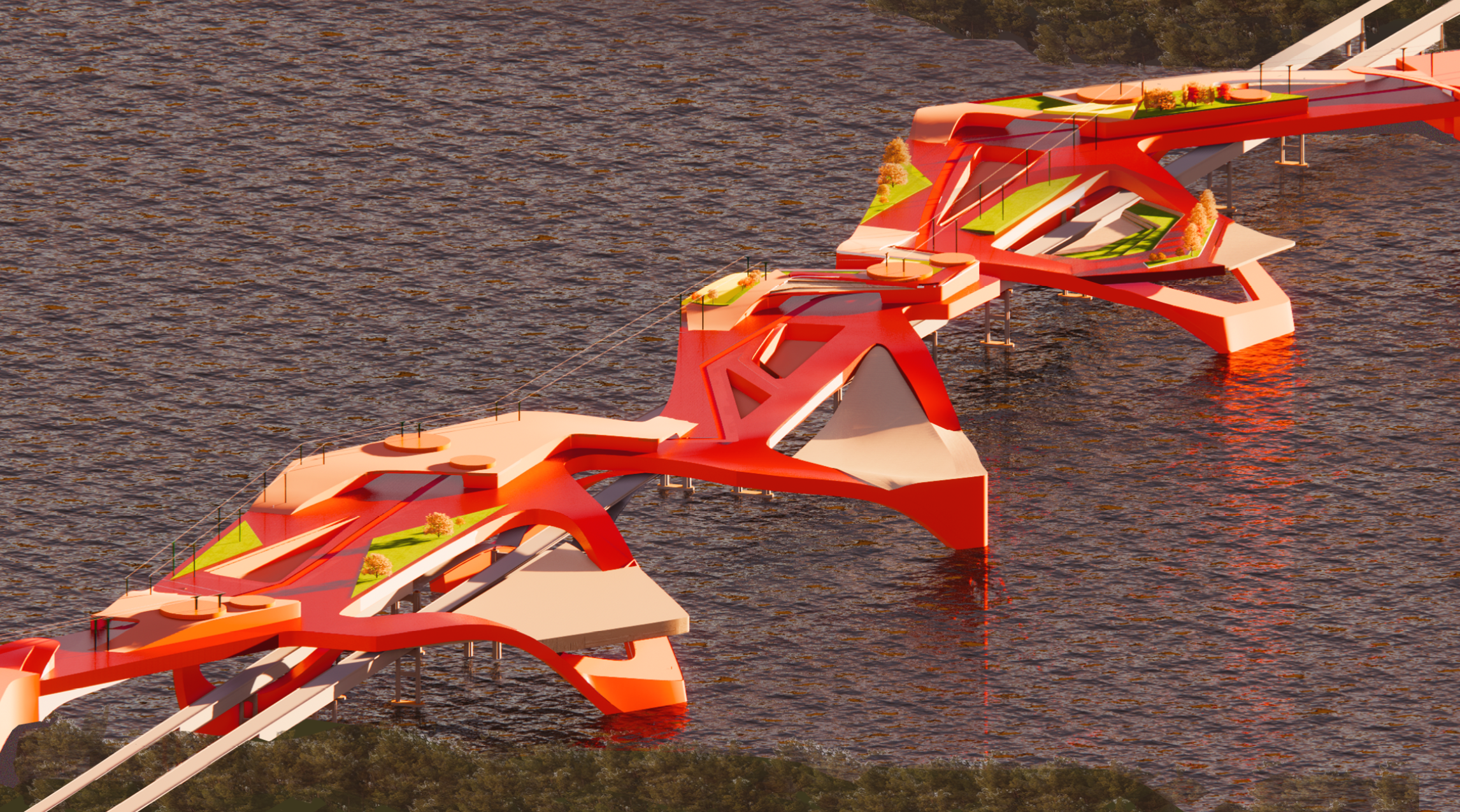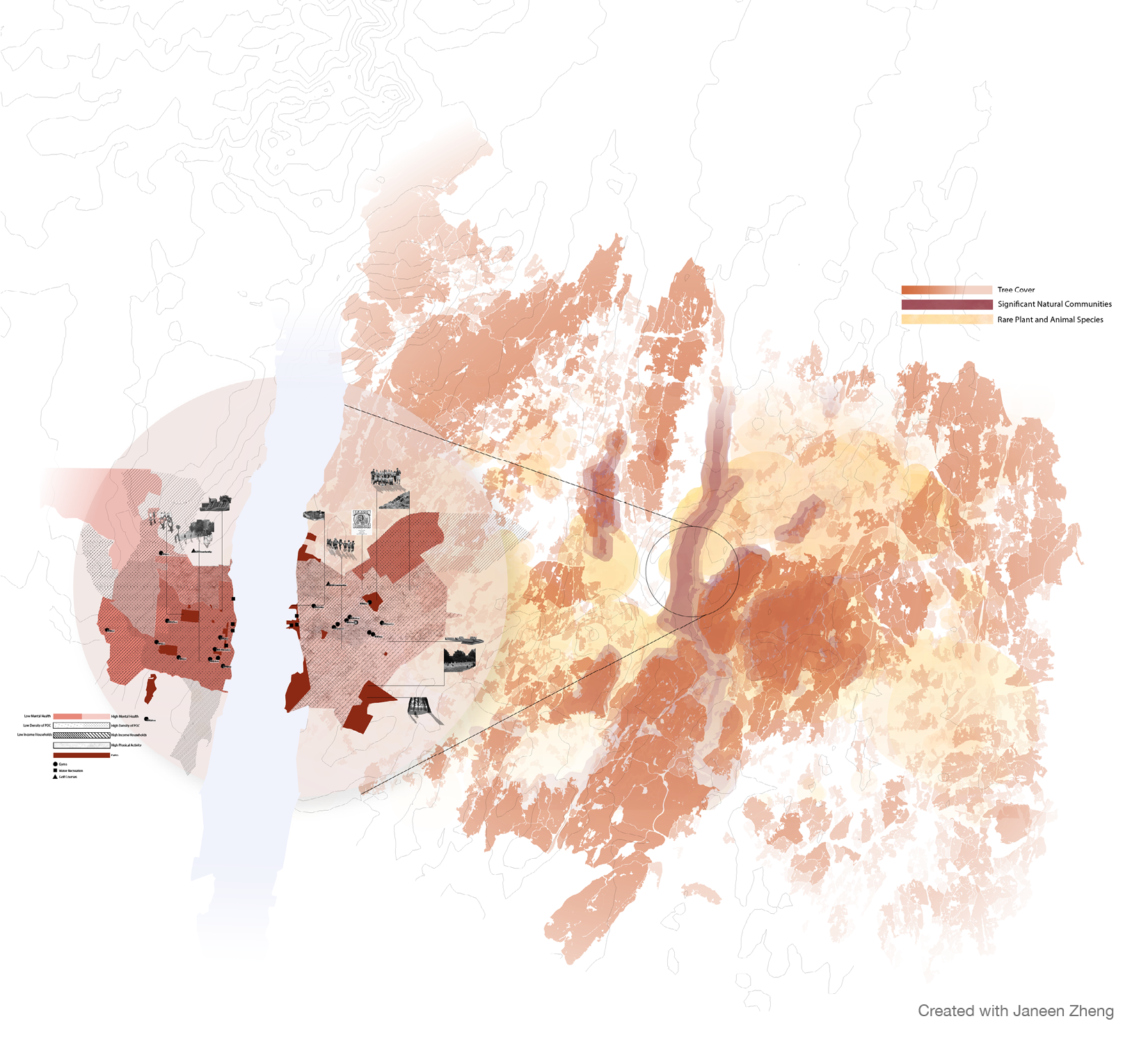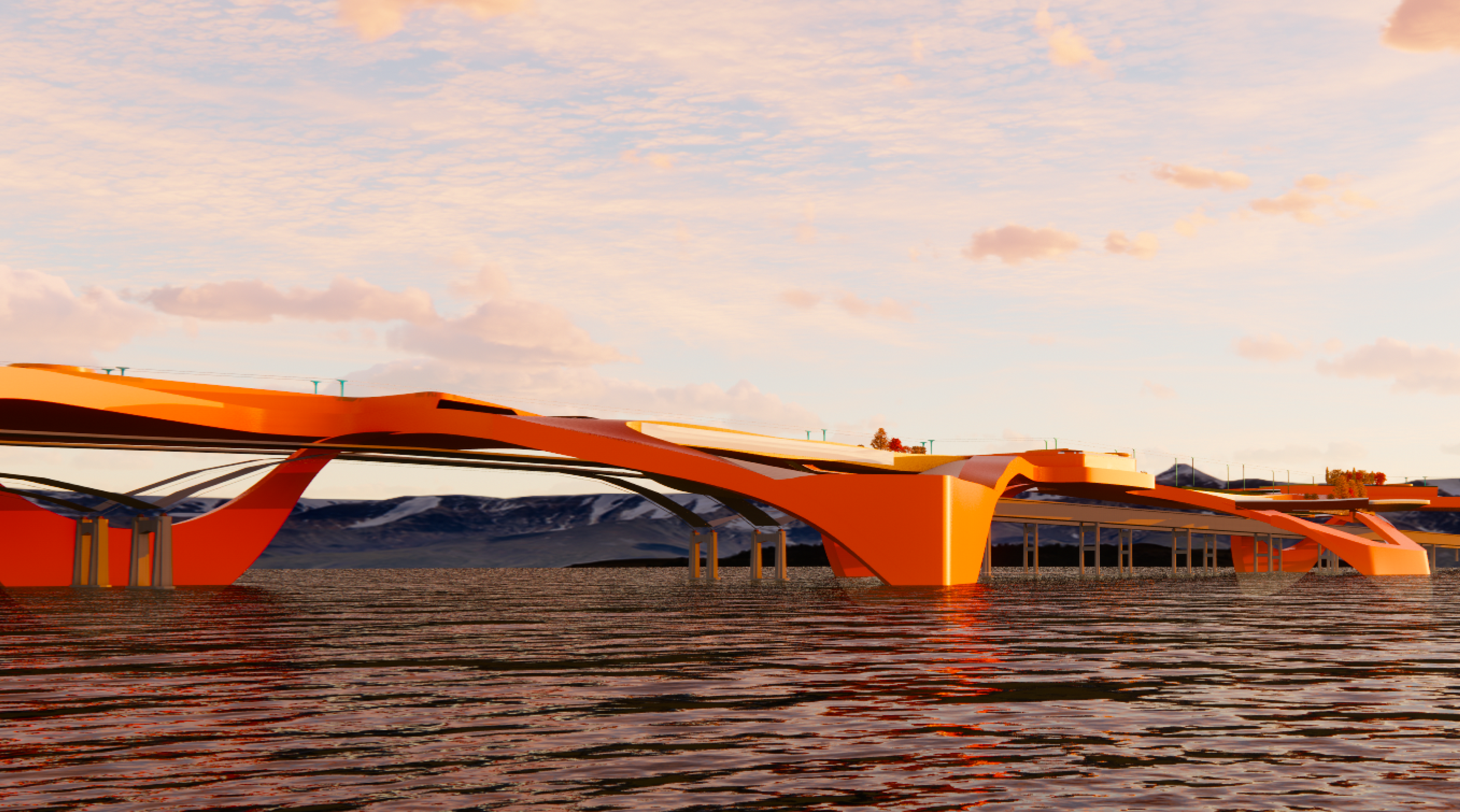PROFESSOR
JACOB COMERCI
STUDIO SECTION
ON BRIDGES
Bridges often serve as a marker of civic identity and social will. Images of the Golden Gate and George Washington bridges circulate on stamps, postcards and in travel guides, figuring prominently in our collective consciousness.
Despite their importance and ubiquity in the built environment, however, architects’ relationship to bridges is most often relegated to land-based pylons and/or ornamental details. In a word; bridges, with few exceptions, exist squarely in the domain of engineers. This strict disciplinary delineation has led most often to the bridge-as-engineering-marvel, functioning as visual spectacle and means to an end. But what if bridges could be an end in-and-of themselves? What if a bridge is the destination? In this studio, students reimagined the Newburgh-Beacon bridge in Orange County, New York. The bridge links two cities where despite their proximity, there exists a significant wealth, health and safety gap. Additional nodes within the vicinity include the Hudson Highlands State Park, West Point Military Academy, Stewart International Airport, the Orange County Correctional Facility Stormking Art Center, and, of course, the richly biodiverse Hudson River itself. As a habitable bridge, students designed projects that act as a both thruway for pedestrians and vehicles as well as a destination for indoor/outdoor recreation.
MALCOLM MCCULLOUGH
Max Coolidge
Diana Huang
ZAIN ABUSEIR
Sydney Cleveland
Muzi Li
OLAIA CHIVITE AMIGO
Jonathan Liao
Evan Meek
JACOB COMERCI
Benjamin Garcia
Dominica Kusmierczyk
LAURA MARIE PETERSON
Erica Behm,
Haley Beverlin
Lauren Conroy,
Zoë Meinke
STUDENT WORK
DOMINICA KUSMIERCZYK
“VIEWS, VOIDS, ANTICIPATION”
This bridge serves as a liaison between Newburgh and Beacon in Downstate New York that addresses the recreational and cultural disparities between the two cities. The design provides a symmetrical distribution of program throughout its span and a variety of deinstitutionalized spaces connected by an accessible gondola system. The architectural affordances give pedestrians the liberty of creating their own experiences without the limits of imposed activity. A stress-free environment for bikers and walkers is created by separating the vehicular traffic from the pedestrian bridge as well as encouraging continuous exploration of the bridge through voids and anticipation.







